|Matt Levine|
I.
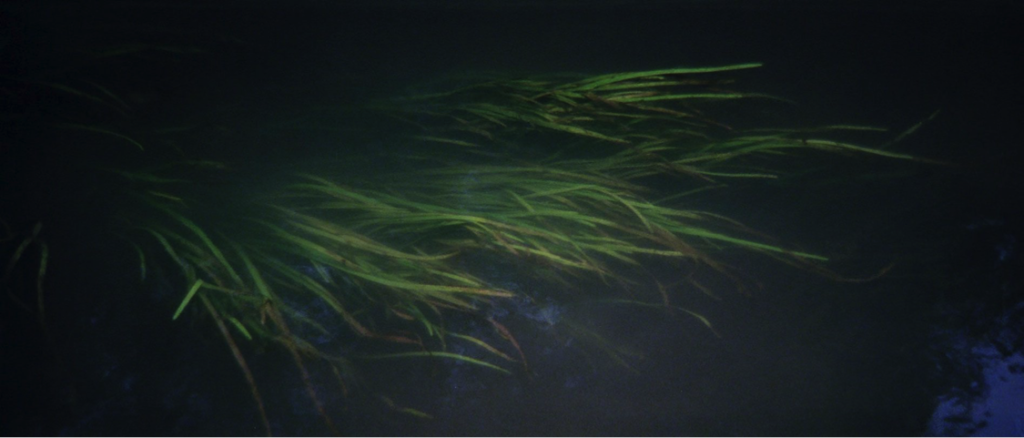
Green seaweed floating in a rippling current. A green so lush only film could create it. The first shot of Solaris sets up its main tension: nature as mystical, unknowable, beyond the grasp of human control. A leaf floats across the water, fiery orange. Blades of grass shoot upward through the frame, violent and serene. Is this planet Earth?
II.

We’re at a secluded lake house, a place of memory and longing for psychologist Kris Kelvin (Donatas Banionis), whose father owns the home. A birdcage is placed next to an open window, two yellow birds chirping stupidly inside. Throughout Solaris, humans will frequently resemble these oblivious canaries, trapped in a different kind of cage.
“I don’t like innovation,” says Kris’ father (Nikolai Grinko). His son is the antithesis, a cold and logical pragmatist who believes science has replaced morality.
A downpour rages suddenly, cascading down, though it’s still bright and sunny and the raindrops are radiant. Water reappears often throughout the movie, a force beyond human control, a reminder of our weakness.
III.
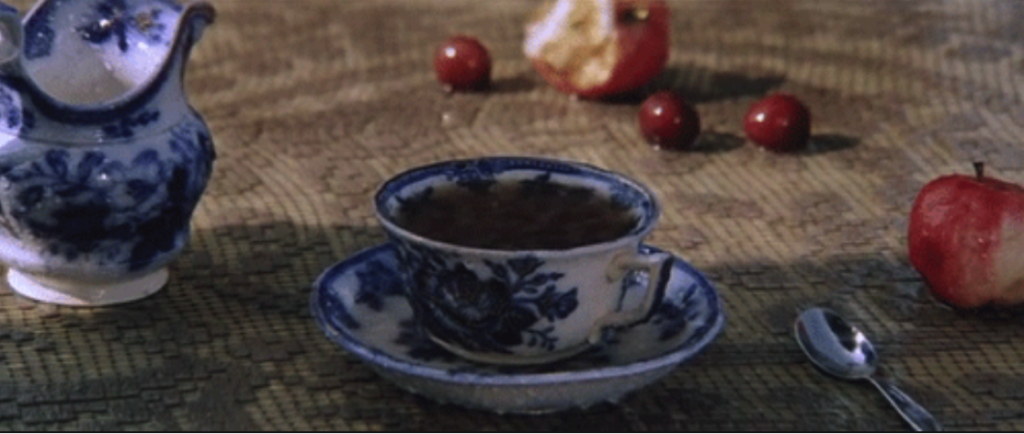
A staggering still life. A table in the rainstorm: blue-and-white china, saucer overflowing with tepid tea and rainwater, a few cherries, a half-eaten apple overrun with ants. How and why is this so beautiful? The tableau resembles one of the baroque still lifes that Tarkovsky, an art student, loved so much, but this shot epitomizes his idea that cinema is “sculpting in time.”
IV.
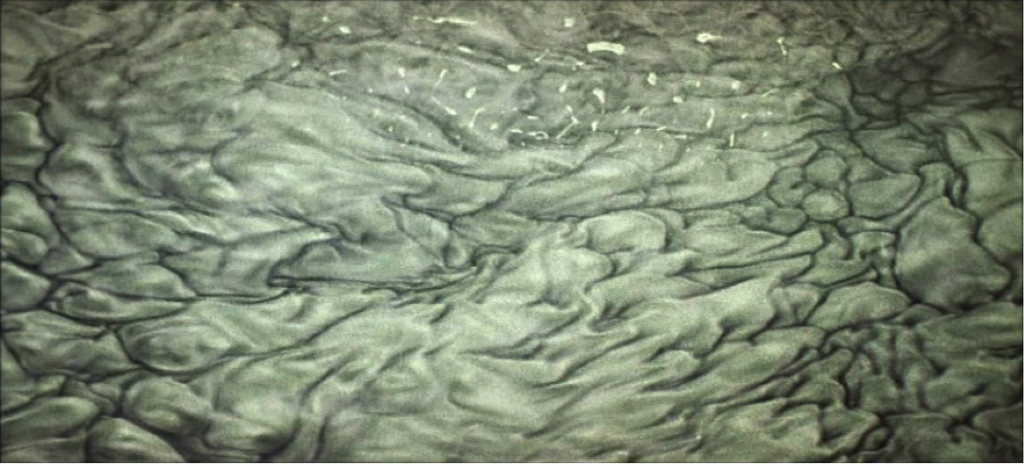
A film within a film within a film: we watch government bureaucrats view footage that a cosmonaut named Burton (Vladislav Dvorzhetsky) had taken of the planet Solaris. The scene with the Soviet minions is in monochrome black-and-white, overplaying the depiction of politics as mind-numbing, soul-crushing tedium.
But then we cut to the ravishing, full-color footage that Burton had filmed of the mysterious planet, all roiling clouds, sun-drenched light, and radiant, dazzling hues. It resembles the experimental cinema of Jordan Belson.
Afterwards, we cut back to the colorless world of the bureaucrats.
“Is that it?” one of the men asks. “That’s all of your film?”
“But we don’t understand,” says another. “You filmed clouds.”
We find Tarkovsky in a rare, self-reflexive mode, brushing off the censors and critics who found his work inscrutable. Maybe they weren’t meant to understand it.
V.
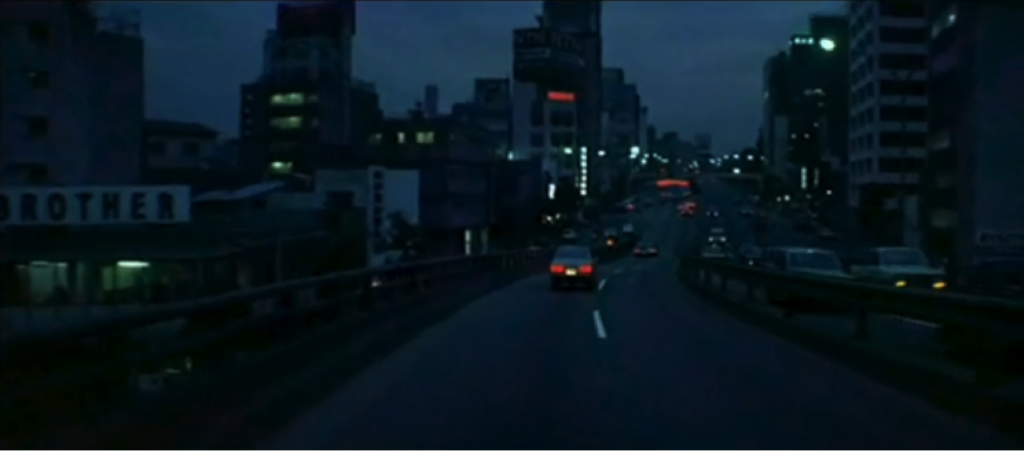
We’re driving into the city, twisting highways, anonymous cars going nowhere. The footage was shot outside of Tokyo and Kyoto, and Tarkovsky probably included long chunks of it to justify the travel visas obtained for the filmmakers. The winding roads are beautiful but impersonal, dystopian; as in Godard’s Alphaville, it only took filming on contemporary streets to evoke a world of futuristic malaise.
VI.

The rocket has launched, hurtling toward Solaris. Kris is in the cockpit, a shard of light falling over his eyes; soon, the camera will swoon acrobatically, superimpositions conveying the visceral assault of space flight. We are firmly in the field of science fiction now. Inevitably, the comparison is the “Stargate” sequence in 2001: A Space Odyssey, so often seen as Solaris’ counterpart, though they’re very different movies: one about the need for human connection, the other about God and self-destruction.
Then, the space station appears to us, glimpsed amid clouds through the cockpit window. It hovers over an endless sea. It’s beautiful and terrifying.
VII.

The interior of the space station is a wonder of Soviet psychedelic futurism, gleaming metallic surfaces, curving centrifugal halls, little blinking knobs and dials, a deep crimson darker than the Russian flag. Kris wears a black leather jacket, yellow mesh shirt, harness with heavy straps and buckles, looking like he’ll reappear in Fassbinder’s Querelle a decade later. Solaris is a fascinating time capsule of the U.S.S.R in 1972; it’s timely and modish without even trying.
VIII.

On the door of one of the living quarters, there is a childlike drawing, the stuff of nightmares. Scrawled in dark marker with globs of ink: “CHELOVEK.” Human being. A monstrous drawing of a stick figure in red, its torso bloated, its fingers elongating in scarecrow-like stalks, a furious scowl on its face beneath a shock of red hair like a mohawk of needles. Something blue is tied around its neck—a scarf or, more likely, a noose. Two yellow stains to the left on the paper, a nauseating shade of yellow, like urine or vomit. Add horror to the mix of genre inflections that Tarkovsky includes in Solaris.
IX.
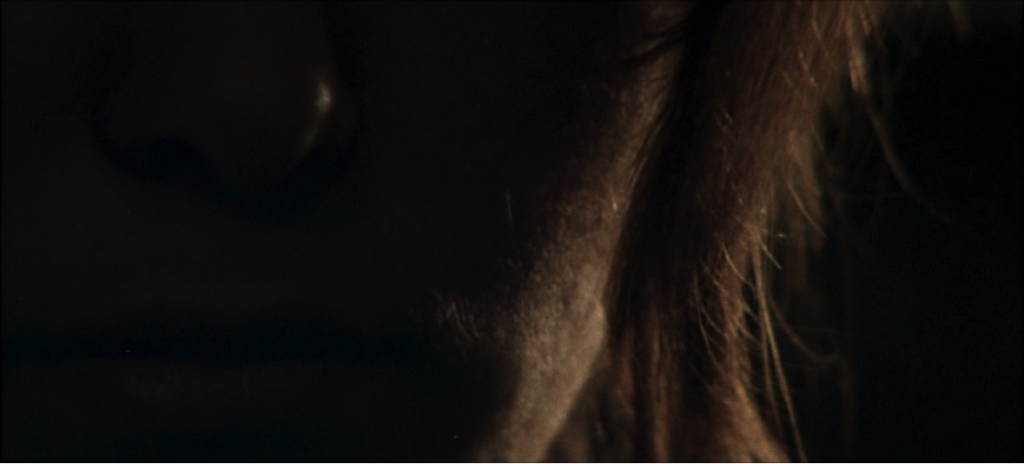
She is viewed in close-up, the lower half of her face—the “guest” that has been conjured by the oceans of Solaris, the manifestation of Kris’ dead wife, Hari (Natalya Bondarchuk). The side lighting accentuates the brown-red glow of her hair, and brings out the slight down on her cheeks and above her lips. Coming after a long stretch of black-and-white imagery, this shot is as striking and wounded as the reappearance of something unattainable should be.
X.
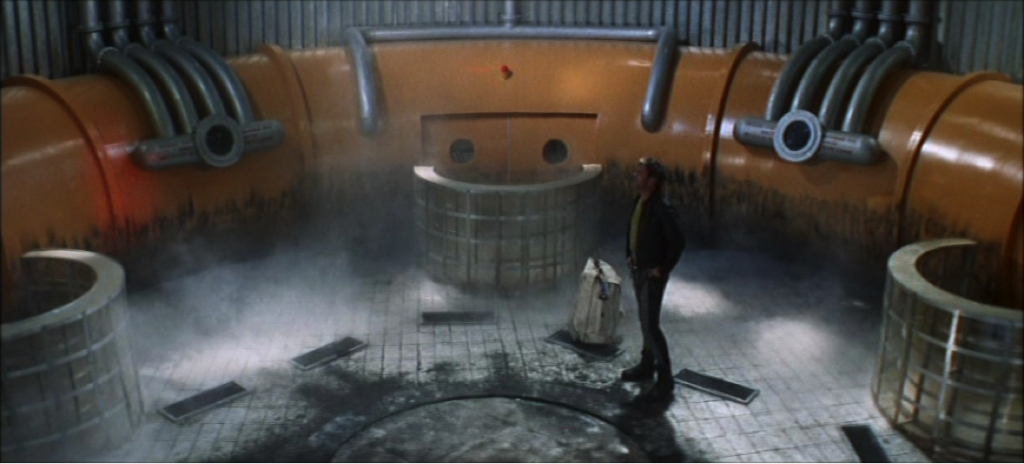
“Part Two” opens with a shot that could be straight out of Barbarella: Kris and Hari in tight white suits, entering a cavernous room on the space station. It’s at moments like these where Tarkovsky’s lofty ambitions and the sci-fi trappings work against each other in tense (and highly enjoyable) ways. The tension is made clearer with a tracking shot that stares down into a black void—the abyss of human existence? These shots of rockets perched in the darkness and smoke being sucked into a cosmic expanse may have influenced the most jaw-dropping shot in Apichatpong Weerasethakul’s Syndromes and a Century.
XI.

In the posh, green-walled library on the space station, where the four characters (three human, one something else) meet, Pieter Brueghel the Elder’s painting “Hunters in the Snow” hangs. Tarkovsky uses this as an excuse to explore the images in its frame, zooming into it, panning across it, visiting the world it painstakingly evokes. The beauty and dedication of this art is presented as the film’s main conflict, between the greatness that humanity is capable of and the brutality it so often creates. It is yet another example of Tarkovsky’s indebtedness to painting, utterly transformed by the moving image—sculpting in time.
XII.

During 30 seconds of weightlessness, a candelabra with flaming candles soars toward the ceiling of the library. It passes behind a chandelier, its fiery light refracted through the glass and crystals. It’s a euphoric moment, followed up by one of Tarkovsky’s few concessions to sentimentality: Kris and Hari floating in midair, holding hands, in love.
We cut to another abstract shot of Solaris, apparently responding to their pleasure; whirlpools and eddies flare in the bright purple ocean, a symbol for a shared, universal consciousness in which human love transforms the topography of the cosmos.
And then the shattering aftereffect, not to be reproduced here—a devastating moment of violence and loss. Who is to blame?
Edited by Michelle Baroody
Solaris plays at the Trylon starting on Sunday, July 7. Visit Trylon’s website to purchase tickets or for more information.
